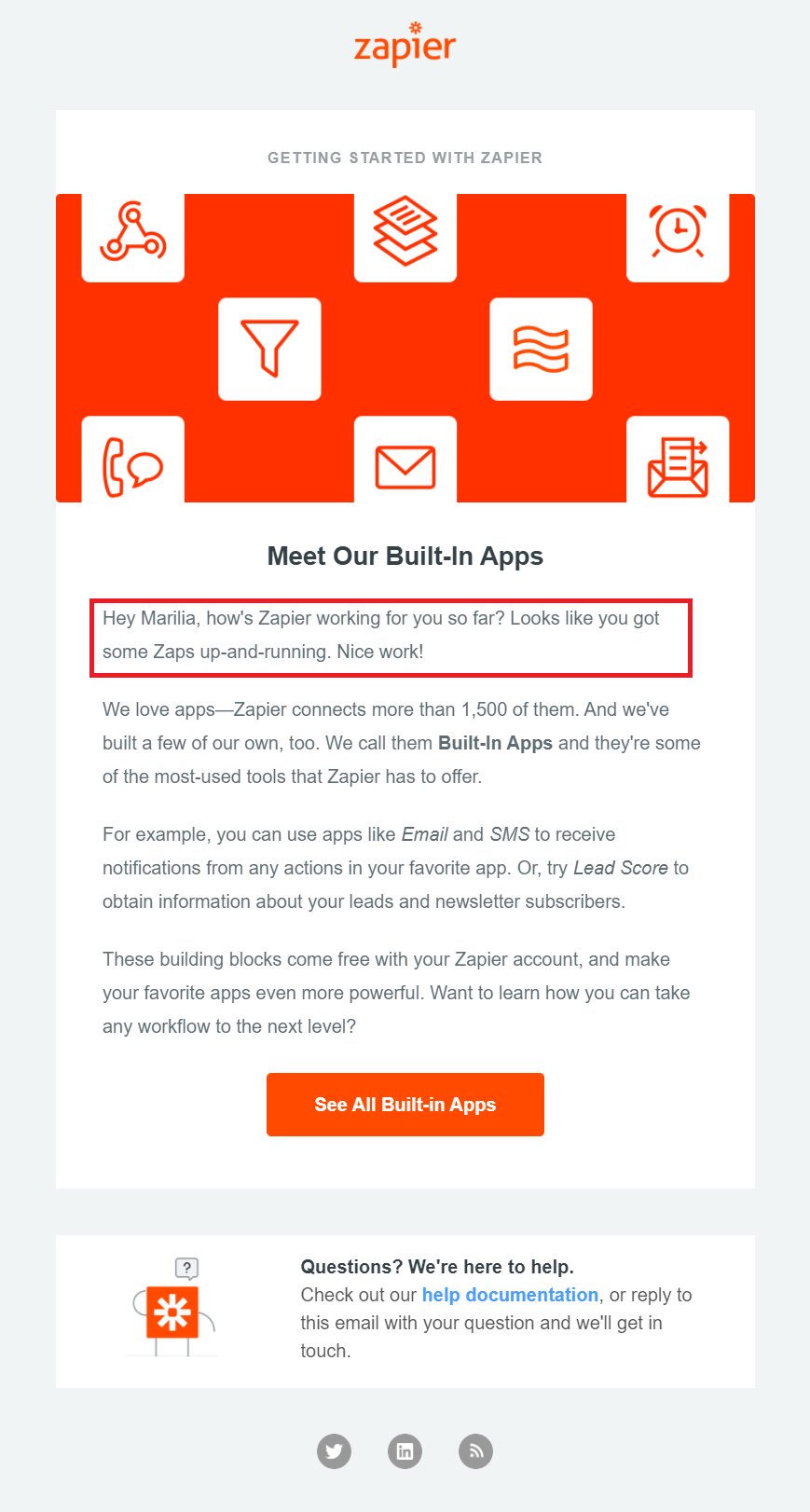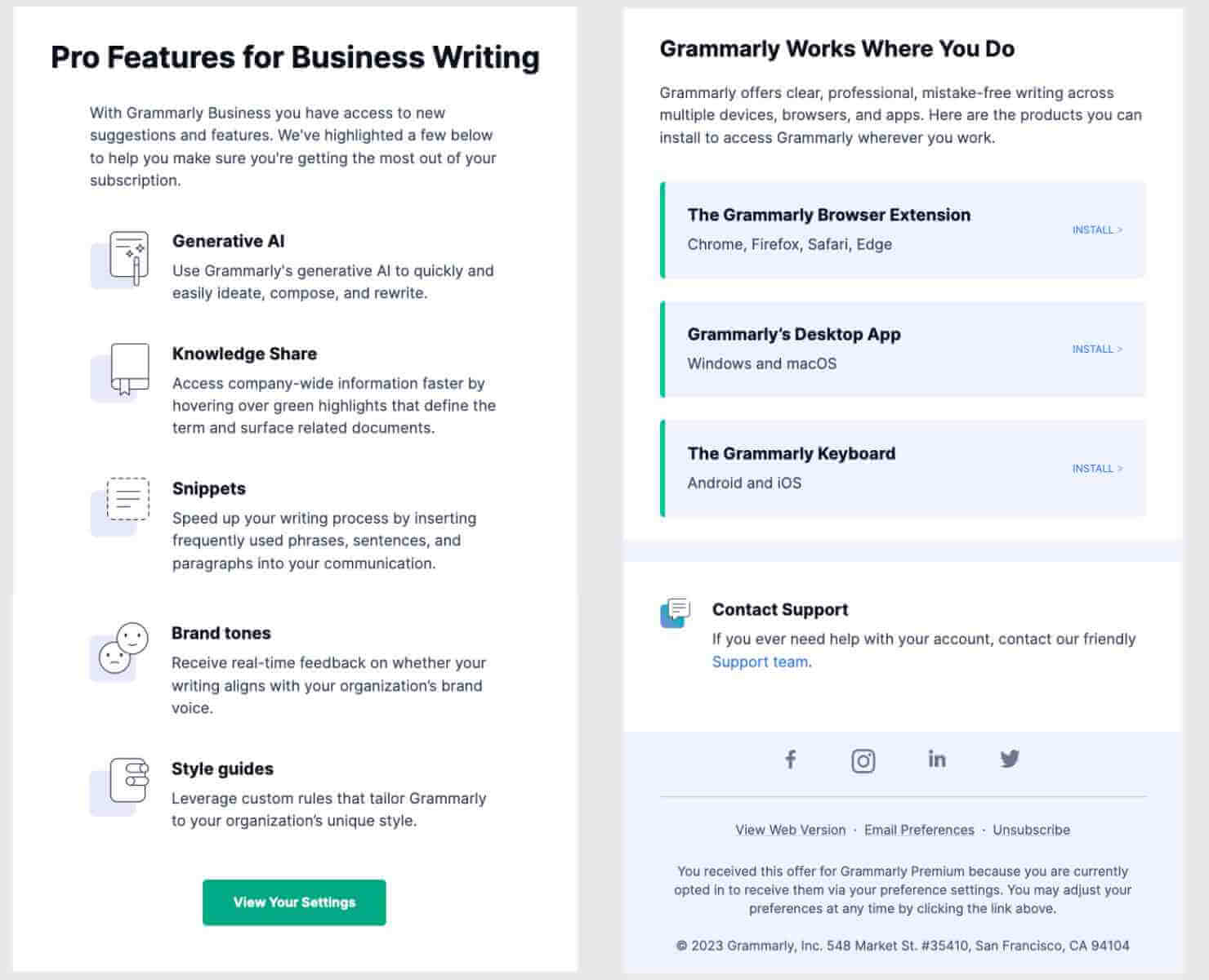B2B email marketing connects businesses through targeted email campaigns. It helps build relationships, generate leads, and drive sales.
Businesses use B2B email marketing to communicate directly with other businesses. This type of marketing focuses on sending relevant and valuable content to decision-makers in other companies. Emails can include newsletters, product updates, or special offers. The goal is to nurture relationships, convert leads into customers, and retain existing clients.
B2B email marketing requires a strategic approach. It involves segmenting the audience, personalizing messages, and analyzing the results. This method ensures that businesses reach the right people at the right time with the right message. Understanding how B2B email marketing works can significantly enhance your marketing efforts and drive success for your business.

Credit: www.abstraktmg.com
Introduction To B2b Email Marketing
Business-to-business (B2B) email marketing is a powerful tool. It helps companies connect with other businesses. It is cost-effective and can boost your brand. Let’s dive into how B2B email marketing works.
What Is B2b Email Marketing?
B2B email marketing involves sending emails to other businesses. These emails aim to build relationships and generate leads. The goal is to turn leads into loyal clients.
- Target Audience: Businesses rather than individual consumers
- Purpose: To promote products, services, or events
- Strategy: Focused on long-term relationships
Businesses use B2B email marketing to inform and engage their clients. They send newsletters, updates, and promotional offers. The content is professional and valuable to the recipient.
Importance For Businesses
B2B email marketing is essential for many reasons. It helps businesses stay connected with clients. Regular emails keep your brand in the minds of your customers.
Benefits include:
| Benefit | Details |
|---|---|
| Cost-Effective | Email marketing is cheaper than traditional advertising. |
| Direct Communication | Emails go straight to your client’s inbox. |
| Measurable Results | You can track open rates and clicks easily. |
| Personalization | Emails can be tailored to the recipient’s needs. |
Businesses can see immediate results from their email campaigns. They can adjust their strategies based on the data they collect.
Building An Email List
Building an email list is vital for B2B email marketing. It connects your business with potential clients. A strong list increases engagement and conversion rates. Let’s explore how to create an effective email list.
Target Audience Identification
First, identify your target audience. Know who your ideal clients are. Understand their needs, preferences, and pain points. Research their industry and job roles. This helps in crafting relevant content. It also ensures your emails reach the right people.
Opt-in Strategies
Implementing opt-in strategies is crucial. Create engaging sign-up forms on your website. Offer value, like a free eBook or a discount. Use clear calls-to-action. Ensure the process is simple. Collect only essential information to avoid overwhelming users.
Another effective strategy is hosting webinars. Provide valuable insights on industry topics. Promote these events through social media and your website. During the webinar, encourage attendees to join your email list.
Networking events are also useful. Collect business cards and ask permission to add contacts to your list. Follow up with personalized emails to build relationships.
Crafting Effective Emails
Crafting effective emails is crucial for a successful B2B email marketing campaign. Each email needs to grab attention, be relevant, and prompt action. This section will guide you on creating compelling subject lines and personalized content.
Compelling Subject Lines
A subject line is the first thing recipients see. It must be eye-catching and concise. Keep it under 50 characters. Use action words and make it relevant to the reader. Questions or lists can also increase open rates. Testing different subject lines can help find what works best.
Personalized Content
Personalized content makes the recipient feel valued. Use their name and company details in the email. Tailor the message to their interests and needs. Segment your audience based on industry, role, or past behavior. This ensures the content is relevant to each recipient. Personalization can boost engagement and conversions.
Segmentation Techniques
B2B email marketing relies heavily on segmentation techniques. These techniques help businesses target the right audience. Segmentation ensures that each email is relevant to the recipient. This increases the chances of engagement and conversions. Below, we explore two common segmentation methods: demographic and behavioral.
Demographic Segmentation
Demographic segmentation divides your email list based on basic information. This includes factors like age, gender, job title, and industry. For example, you might send different emails to CEOs and marketing managers. This ensures the content speaks directly to their needs. It’s a simple yet effective way to make your emails more personalized.
Behavioral Segmentation
Behavioral segmentation focuses on the actions of your recipients. This could include past purchases, email opens, or website visits. By tracking these behaviors, you can tailor your emails to match their interests. For instance, send follow-up emails to those who clicked a link in your previous email. This shows you understand their interests and increases engagement.
Automation In Email Marketing
Email marketing for B2B has transformed with automation. It saves time and increases efficiency. Automation in email marketing means using software to send emails at the right time. This ensures your message reaches the right person. Automation tools make your job easier.
Automated Workflows
Automated workflows guide your emails based on user actions. They allow you to set a series of emails to be sent automatically. For example, a new subscriber gets a welcome email. Then, after a few days, they receive a follow-up email. This keeps your audience engaged without extra effort.
Trigger-based Emails
Trigger-based emails send messages based on specific actions. These actions can include signing up for a newsletter or downloading a resource. If a user abandons a cart, they receive a reminder email. This helps in engaging potential clients effectively. Trigger-based emails ensure timely communication.

Credit: moosend.com
Performance Metrics
B2B email marketing can yield significant results. To measure its effectiveness, you need to focus on key performance metrics. These metrics help you understand how your campaigns are doing. They also highlight areas for improvement. Two important metrics are open rates and click-through rates.
Open Rates
Open rates show how many recipients open your emails. A higher open rate means your subject lines are engaging. It also indicates your emails reach the right audience. To improve open rates, personalize your subject lines. Use clear and concise language. Avoid spammy words. Test different subject lines to see which ones perform best.
Click-through Rates
Click-through rates (CTR) measure how many people click on links in your emails. A higher CTR means your email content is engaging. It also shows that your call-to-action (CTA) is effective. To boost CTR, make your CTAs clear and action-oriented. Use visually appealing buttons. Place links strategically within your content. Test different CTAs to find what works best.
A/b Testing Strategies
A/B testing is crucial for B2B email marketing success. It helps you understand what works best for your audience. By testing two versions of an email, you can compare results and make data-driven decisions. This process improves engagement and boosts conversion rates.
Email Copy Testing
Testing email copy involves comparing different versions of text. Focus on subject lines, headlines, and body content. For example, try different tones or calls to action. See which version gets more opens and clicks. Keep sentences short and clear. Avoid jargon and complex words.
Design Element Testing
Design element testing looks at visuals and layout. Test different images, colors, and fonts. See how they impact engagement. For example, try different button styles or placements. Compare results to find the most effective design. Ensure your emails are easy to read and visually appealing.
Case Studies
Case studies provide practical examples of how B2B email marketing works. They show real-world results and lessons. By examining these cases, businesses can learn what strategies work best.
Successful Campaigns
One company boosted its sales by 30% using targeted emails. They segmented their audience based on industry. This allowed them to send more relevant content. Another business increased its open rates by 25%. They did this by personalizing their subject lines.
Another successful campaign involved a software firm. They used a drip email series to nurture leads. This approach led to a 40% rise in conversions. The company sent educational content over a few weeks. This built trust and kept prospects engaged.
Lessons Learned
These case studies offer valuable insights. One lesson is the importance of audience segmentation. Sending generic emails to everyone is less effective. Targeted messages perform better.
Personalization also stands out as a key factor. Emails that feel personal get more attention. Simple changes, like using the recipient’s name, make a big difference.
Consistency is another takeaway. Regularly sending emails keeps your brand in mind. Sporadic emails may be forgotten. A steady schedule helps maintain interest.
Future Trends
The future of B2B email marketing is bright. New technologies are changing the way businesses communicate. Staying ahead means knowing the latest trends. Let’s explore two key trends shaping the future of B2B email marketing.
Ai In Email Marketing
Artificial Intelligence (AI) is making email marketing smarter. AI can analyze customer data. It helps create personalized email content. This means better engagement with your audience. AI can also predict the best times to send emails. This increases the chances of your emails being read. AI tools can even automate responses. This saves time and improves efficiency.
Interactive Emails
Interactive emails are the next big thing. They engage recipients directly within the email. Think of embedded surveys, polls, or forms. These elements make emails more engaging. Users can interact without leaving their inbox. This increases user engagement. Interactive content can also include videos and image carousels. These elements keep the audience interested. They make the email experience more dynamic and enjoyable.

Credit: optinmonster.com
Frequently Asked Questions
What Is B2b Email Marketing?
B2B email marketing is the practice of sending emails between businesses. It helps build relationships and drive sales.
How Do You Create An Effective B2b Email Campaign?
Start by defining your goals. Segment your audience. Create personalized content. Track your results and adjust as needed.
Why Is Segmentation Important In B2b Email Marketing?
Segmentation allows you to target specific groups. This makes your emails more relevant and increases engagement rates.
What Metrics Should You Track In B2b Email Marketing?
Monitor open rates, click-through rates, and conversions. These metrics help you measure the success of your campaigns.
How Can You Improve B2b Email Open Rates?
Write compelling subject lines. Personalize your emails. Send them at optimal times. Always test and refine your strategy.
Conclusion
B2B email marketing works by connecting businesses with potential clients. It builds relationships through personalized messages. Effective campaigns provide value and address customer needs. Consistent communication keeps your brand top-of-mind. Analyzing results helps improve future efforts. Remember, success lies in understanding your audience.
Tailor your approach to fit their preferences. This strategy can drive growth and strengthen business connections.



Leave a Reply